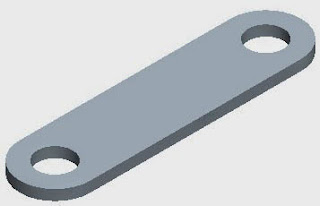According to the standard UNE-EN 60034-8, the principles of the stator windings are designated with the letters U1, V1 and W1 and the final ends with U2, V2 and W2. Formerly, the principles of the windings were designated with U, V and W and the final ends with X, Y and Z.
Terminal box of an AC machine
A particularity of the terminal boxes is that terminals of the same phase are not facing each other in the terminal strip since they are diagonally arranged as shown in figure 1.
This arrangement of the principles and ends of coils in the terminal box facilitates the connection of the machine through the use of appropriate brass sheets
Brass sheet used to make the triangle or star connection in the terminal box of an electric machine.
To make the triangle connection of the stator windings, terminals U1 are connected with W2, V1, with U2 and W1 with V2 as shown in figure 3 by means of the brass sheets provided for this purpose.The star connection is achieved by joining the terminals W2 with U2 and U2 with V2 as shown in Figure 4. In this case, only two brass sheets are needed to join the ends of the windings. However, all three are used, two of them are superimposed, in order to have the three sheets of brass when the triangle connection of the machine is needed.
The triangular and star connection of the machine modifies the nominal value of mains voltage that must be applied to the machine for its correct operation, the star voltage value being 3-√ times greater than the delta voltage. However, the phase voltage applied to the stator windings is the same for both connections.
The direction of rotation of the machine is determined by the direction of rotation of the rotating magnetic field in the stator. If terminal U1 is connected to phase R, terminal V1 to phase S and terminal W1 to phase T and the direction of rotation is hourly, it will suffice to switch any two phases - connecting terminal V1 to phase T and W1 to phase S for example - to reverse the direction of rotation regardless of the triangle or star connection of the machine.
























No comments:
Post a Comment